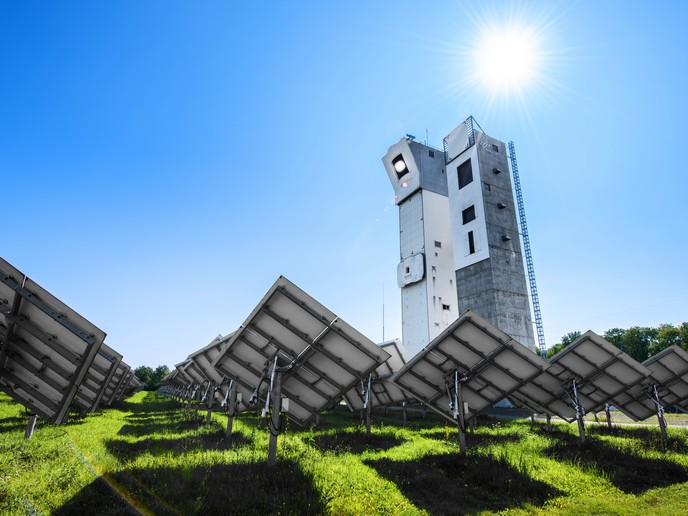Stronger materials for more efficient solar energy
As we move away from fossil fuels, renewable energy technologies must become more efficient and scalable to meet rising demand. Solar energy is one of the most abundant natural resources but turning sunlight into electricity or heat still poses challenges. Modern concentrated solar power(opens in new window) (CSP) plants store heat in fluids like molten salts and then convert it into electricity. The efficiency of this process, however, is limited by the maximum temperatures these materials can withstand. To achieve higher efficiency, reduce costs and facilitate new applications like solar fuel production and industrial-scale recycling, the sector needs technologies that can withstand far harsher conditions.
Energy systems of higher efficiency
The EU-funded COMPASsCO2(opens in new window) project set out to address this challenge by developing new materials, coatings and a heat exchanger that together could enable solar plants to run at 700 °C and reach higher efficiency. Central to the analysed system is the Brayton cycle, an energy conversion system widely used in jet engines and gas turbines. In a Brayton cycle, a working fluid is compressed, heated, and then expanded through a turbine to generate power. “Instead of steam as the working fluid, we utilise supercritical carbon dioxide (s-CO2), a fluid state of carbon dioxide with exceptional properties as it combines the behaviour of gases and liquids,” explains project coordinator Daniel Benitez.
Robust particles and alloys for extreme conditions
The consortium has generated solid particles using recycled material from the steel industryto serve as both heat transfer and storage media. Coated with high solar absorptance materials, these particles can withstand extreme heat and erosion, ensuring reliable long-term performance. Complementing the particles are novel chromium-based superalloys(opens in new window) developed to resist oxidation and corrosion at high temperatures and pressures. Unlike costly nickel alloys, the new chromium alloys offer a more affordable and scalable option for solar energy applications and can be used as coatings on less resistant state-of-the-art materials. The prototype heat exchanger has been successfully tested, confirming its durability with particles above 700 °C and s-CO₂ over 200 bar pressure. These results validate the technical feasibility of integrating particle technology with s-CO₂ cycles in next generation CSP plants.
Innovative coatings for real-world applications
With project partners from research and industry, COMPASsCO2 ensured that results are positioned for real-world use. One of the standout achievements of COMPASsCO2, is a chromium/silicon slurry coating that demonstrates high-temperature corrosion resistance and is easier and cheaper to apply than conventional solutions. Its applications go far beyond solar energy, extending to turbines. The coating has already attracted strong interest from external stakeholders and will be integrated into turbine production. The FerOx particles are also ready for commercial production. Further refinement of the techno-economic performance of the heat exchanger will prepare it for deployment in European industries. “Looking ahead, the COMPASsCO2 deliverables represent a step change for concentrated solar thermal plants, unlocking the true potential of solar energy as a driver of the transition to a green future,” concludes Benitez.



